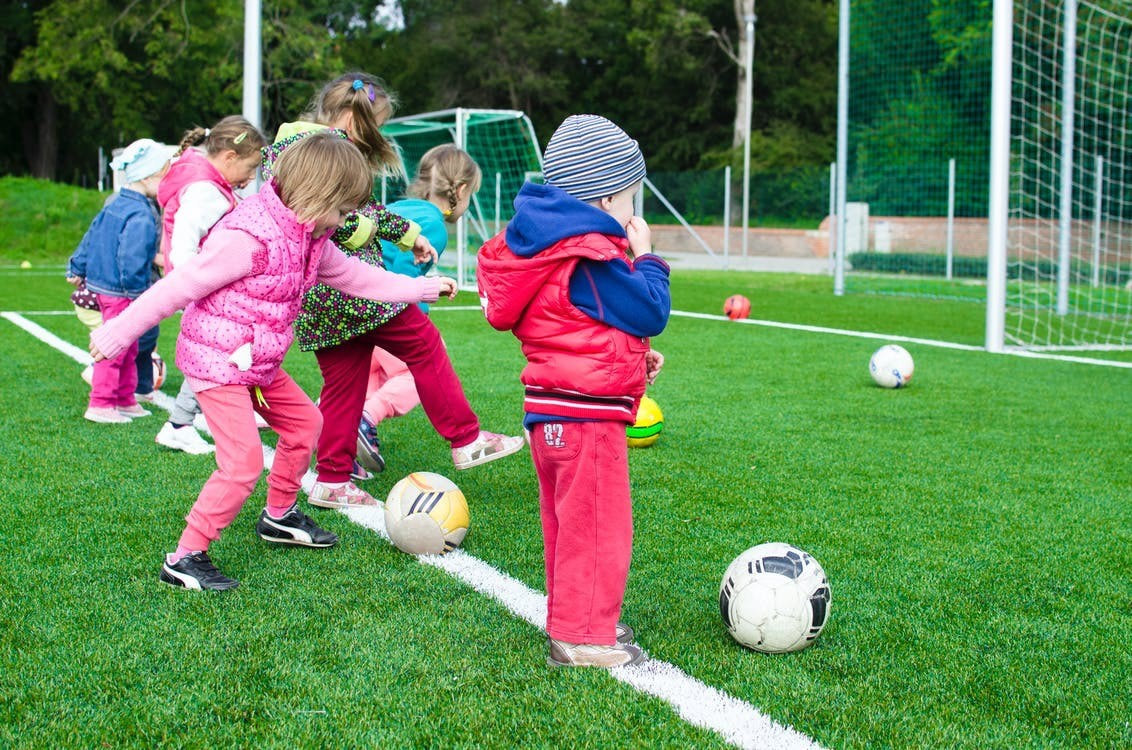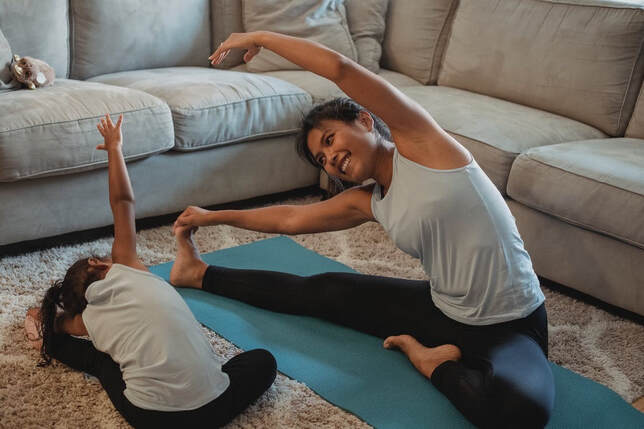Does exercise help my child with ADHD?
By Michelle Chow, BPsych (Hons)
August 2021
By Michelle Chow, BPsych (Hons)
August 2021
Children with Attention Deficit Hyperactivity Disorder (ADHD) struggle with inattentive and/or hyperactive/impulsive behaviour. Common ADHD symptoms include having difficulty concentrating, being unusually forgetful, getting easily distracted and talking excessively. These behaviours can give rise to problems in their mental health, academic performance and social life (Hawkins et al., 2016). Exercise has been put forward as a promising way of managing the impact of ADHD symptoms.
Exercise and ADHD Symptoms
|
Exercise can help improve concentration and focus in children with ADHD. Both short-term exercise, such as an one-off 30-minute run, and consistent long-term exercise have been found to improve cognitive functions normally impaired in ADHD. This includes improvements in processing speed, attention span, impulse control and working memory. Research also shows that cardio exercises (e.g. running, soccer, karate) offer greater and more chronic positive effects than non-cardio exercises (e.g. yoga) (Heijer et al., 2017). But this isn’t all there is - there are many more positive benefits to exercise!
|
Other positive benefits of exercise for children with ADHD
- Opportunities for positive social interactions. This is beneficial especially as children with ADHD are more likely to struggle with poorer social communication skills (Hawkins et al., 2016). Within unstructured social settings such as lunch, children with ADHD may struggle with hyperactive or inattentive behaviour which interfere with their social interactions. Team-based sports offer a shared and structured activity that helps them form friendships.
- Build self-esteem. ADHD symptoms have been found to negatively affect self-perceptions, leading to many children to consider themselves as ‘stupid’ and ‘not in control of themselves’ (Travell & Visser, 2006). Children with ADHD also often struggle academically due to their inhibited ability to concentrate in class. Their involvement in sports can help build their self-confidence and self-esteem by developing non-academic skill sets and success in other areas.
- Decreases risk of obesity. Children with ADHD are at an increased risk of becoming obese adolescents compared to children without ADHD (Ng et al., 2017; Heijer, 2017). Exercise will not only help keep a healthy body mass index, it will also improve their overall physical fitness, sleep and growth.
How can exercise be incorporated into my child’s routine?
- Help your child find something that suits them. Even though cardiovascular exercises and team sports seem to be the most effective in targeting ADHD symptoms (Heijer et al., 2017), it’s more important to figure out an exercise that your child is interested in! This may be soccer, karate, yoga, or even fencing. The more they enjoy it, the more likely they will participate and continue to stay active as they get older.
- Schedule and set time aside. Plan ahead to make sure your child has a convenient time and safe place to exercise on a regular basis.
- Integrate exercise into the little moments. An easy way to do this is by incorporating short exercises, such as jumping jack or push up challenge, in sedentary times such as advertisement breaks
- Involve the whole family. You can sign up to coach a basketball team and encourage your kids to play, sign-up for taekwondo classes as a family, or plan vacations around activities such as kayaking and snorkeling. Exercise can also take place in incidental ways such as brisk walks in the park, family bike rides or even a game of tip in the backyard!
- Give presents that promote exercise. Skate-boards, soccer balls, rackets, performance shoes and activity-tracking watches are great and fun choices.
And once you’ve gotten started – keep going!
Children with ADHD struggle with attention, motivation and persistence - and these traits will probably be observed when they exercise too. They may become distracted during sessions, lose track of what’s going on in a team sport and find it hard to follow instructions. They may also become restless and may lose interest. Try to remain positive and encourage them to persist - exercise is really a helpful and fun way them to function better and feel better!
References
Den Heijer, A. E., Groen, Y., Tucha, L., Fuermaier, A. B., Koerts, J., Lange, K. W., ... & Tucha, O. (2017). Sweat it out? The effects of physical exercise on cognition and behavior in children and adults with ADHD: a systematic literature review. Journal of Neural Transmission, 124(1), 3-26.
https://www.mdanderson.org/publications/focused-on-health/tips-to-get-kids-to-exercise.h17-1589046.html
Hawkins, E., Gathercole, S., Astle, D., Holmes, J., & CALM Team. (2016). Language problems and ADHD symptoms: How specific are the links?. Brain sciences, 6(4), 50.
O’Connor, B. C., Fabiano, G. A., Waschbusch, D. A., Belin, P. J., Gnagy, E. M., Pelham, W. E., ... & Roemmich, J. N. (2014). Effects of a summer treatment program on functional sports outcomes in young children with ADHD. Journal of abnormal child psychology, 42(6), 1005-1017.
Ng, Q. X., Ho, C. Y. X., Chan, H. W., Yong, B. Z. J., & Yeo, W. S. (2017). Managing childhood and adolescent attention-deficit/hyperactivity disorder (ADHD) with exercise: A systematic review. Complementary therapies in medicine, 34, 123-128
Travell, C., & Visser, J. (2006). ‘ADHD does bad stuff to you’: young people's and parents' experiences and perceptions of Attention Deficit Hyperactivity Disorder (ADHD). Emotional and Behavioural Difficulties, 11(3), 205-216.
Den Heijer, A. E., Groen, Y., Tucha, L., Fuermaier, A. B., Koerts, J., Lange, K. W., ... & Tucha, O. (2017). Sweat it out? The effects of physical exercise on cognition and behavior in children and adults with ADHD: a systematic literature review. Journal of Neural Transmission, 124(1), 3-26.
https://www.mdanderson.org/publications/focused-on-health/tips-to-get-kids-to-exercise.h17-1589046.html
Hawkins, E., Gathercole, S., Astle, D., Holmes, J., & CALM Team. (2016). Language problems and ADHD symptoms: How specific are the links?. Brain sciences, 6(4), 50.
O’Connor, B. C., Fabiano, G. A., Waschbusch, D. A., Belin, P. J., Gnagy, E. M., Pelham, W. E., ... & Roemmich, J. N. (2014). Effects of a summer treatment program on functional sports outcomes in young children with ADHD. Journal of abnormal child psychology, 42(6), 1005-1017.
Ng, Q. X., Ho, C. Y. X., Chan, H. W., Yong, B. Z. J., & Yeo, W. S. (2017). Managing childhood and adolescent attention-deficit/hyperactivity disorder (ADHD) with exercise: A systematic review. Complementary therapies in medicine, 34, 123-128
Travell, C., & Visser, J. (2006). ‘ADHD does bad stuff to you’: young people's and parents' experiences and perceptions of Attention Deficit Hyperactivity Disorder (ADHD). Emotional and Behavioural Difficulties, 11(3), 205-216.


